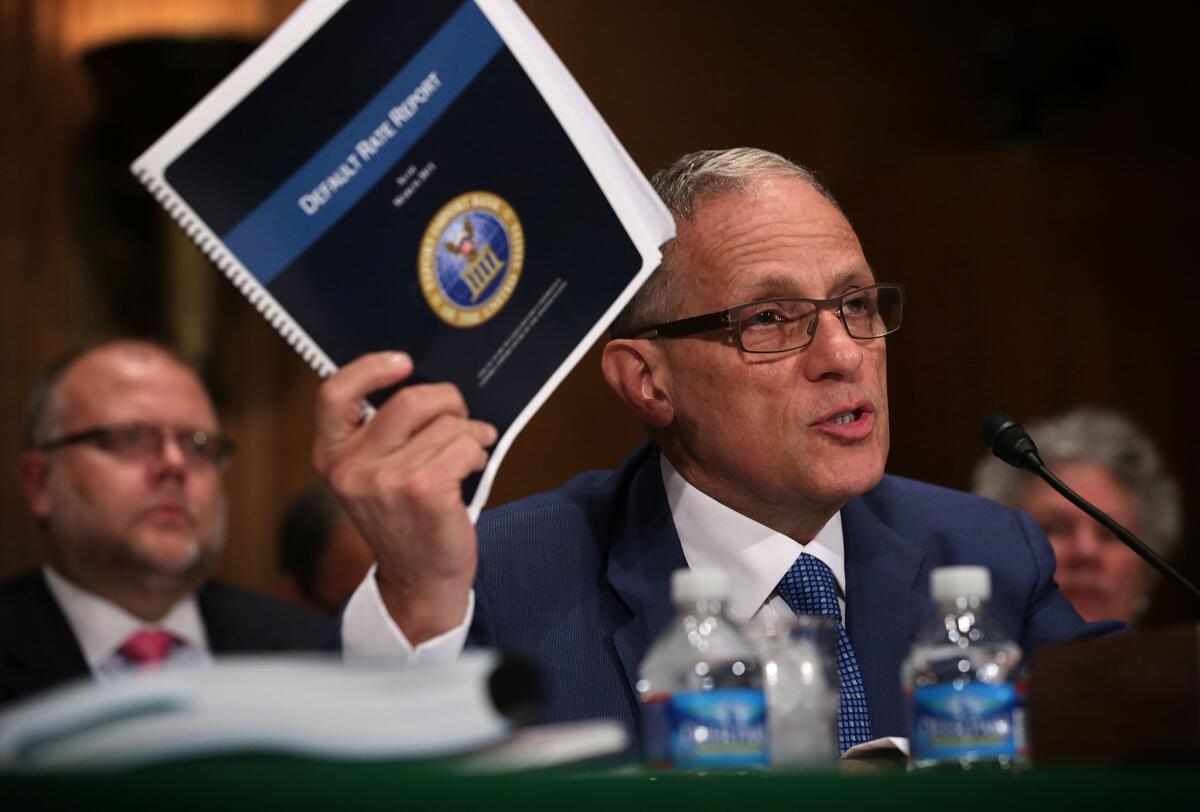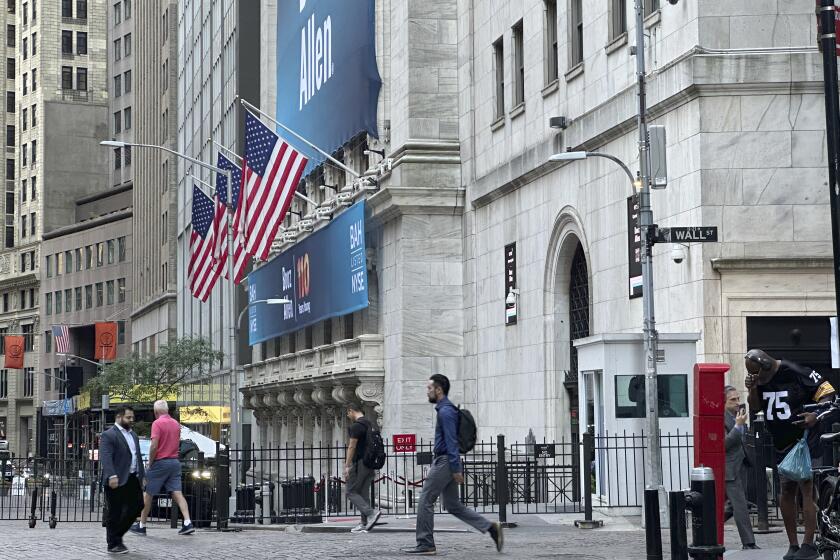Export-Import Bank earned a profit of $432 million for taxpayers last year despite shutdown

Fred Hochberg, president of the federal Export-Import Bank, holds up a copy of the bank’s default rate report as he testifies before a Senate committee in June 2015.
- Share via
Reporting from Washington — The federal Export-Import Bank, which helps U.S. companies sell their products abroad, said Thursday it earned a profit of $432 million for taxpayers last year despite a lengthy shutdown after congressional critics allowed its authorization to lapse.
The bank is funded by interest and fees on the loans it makes to foreign buyers of U.S. goods and other aid it gives to exporters.
Last year, the bank provided $12.4 billion in assistance to finance about $17 billion in exports, it said in its annual report.
The assistance was down from $20.5 billion the previous year. And profit was down as well, from $675 million.
But a key reason for both declines was that the bank operated only for nine months in the 2015 fiscal year, which ended Sept. 30. The bank was unable to provide any new assistance after June 30, when its charter expired.
In the report, Fred Hochberg, the agency’s president, noted that Congress had never before allowed the bank’s authority to lapse, adding, “make no mistake, the lapse in the bank’s full authority had consequences.”
Some exporters said they lost business. Boeing Co. announced layoffs at its Southern California-based satellite division after a customer could not get Export-Import Bank financing.
Conservatives have branded the bank’s assistance corporate welfare because much of it benefits large exporters, such as Boeing and General Electric Co. Last spring, House Republican leaders prevented a vote to reauthorize the bank’s charter.
A bipartisan push, backed by leading business groups, overcame the opposition and the bank’s charter was reauthorized in December.
The bank has started approving new assistance. But it remains hamstrung because its five-member board currently has only two members and it needs three to approve transactions of more than $10 million.
On Monday, President Obama nominated Republican J. Mark McWatters to the board. A Democratic nominee, former board member Patricia M. Loui-Schmicker, has been pending in the Senate since March.
Critics point out that taxpayers are on the hook for any losses the bank can’t cover on its outstanding assistance. The amount of outstanding loans and other aid dropped last year to $102 billion from $112 billion the previous year.
The bank’s default rate ticked up to 0.235% last year from 0.175% the previous year. But that rate remains low, the bank said.
When it reauthorized the bank through the 2019 fiscal year, Congress made some changes to try to addresss concerns of opponents. Among them were reducing the bank’s overall lending cap to $135 billion, from $140 billion, and increasing the percentage of aid provided to small businesses to 25%, from 20%.
Bank profits go to the U.S. Treasury and the $432 million was sent in October, according to the annual report. The bank said it has sent the Treasury $6.9 billion in net profits since 1992.
Follow @JimPuzzanghera on Twitter
More to Read
Inside the business of entertainment
The Wide Shot brings you news, analysis and insights on everything from streaming wars to production — and what it all means for the future.
You may occasionally receive promotional content from the Los Angeles Times.











